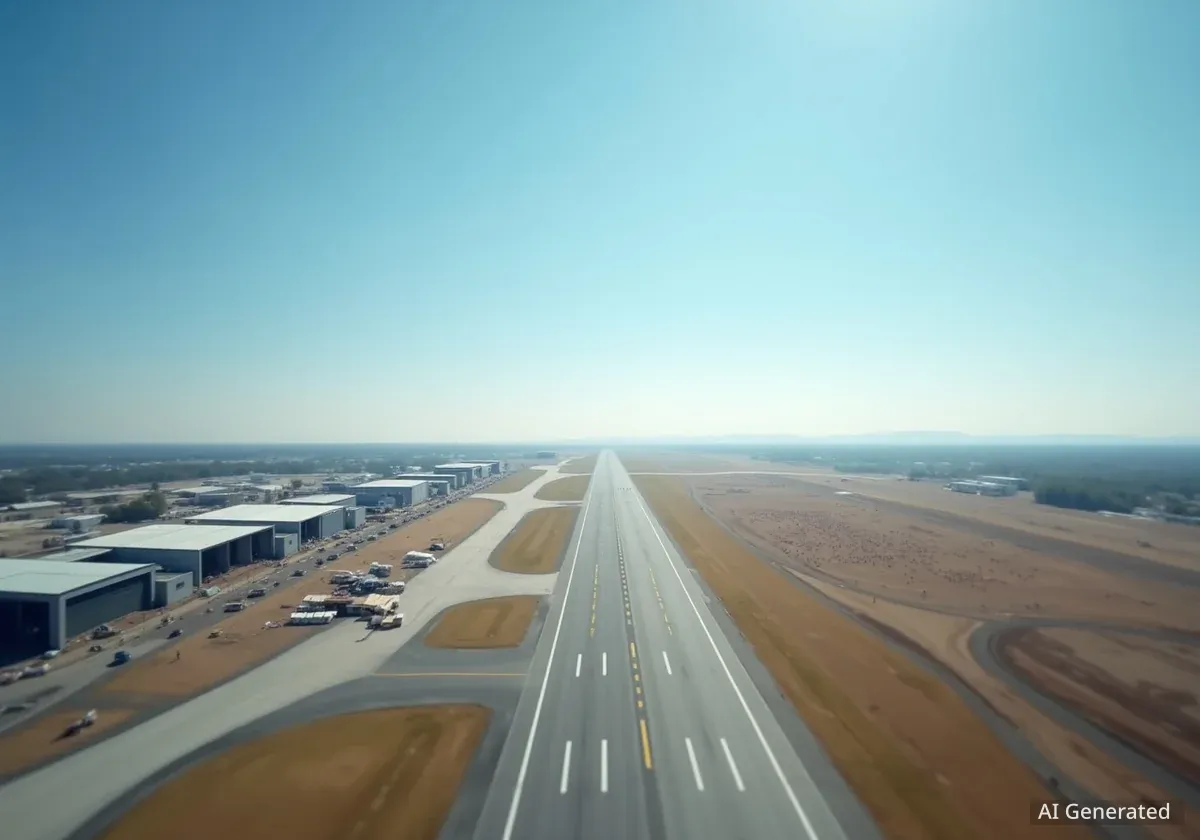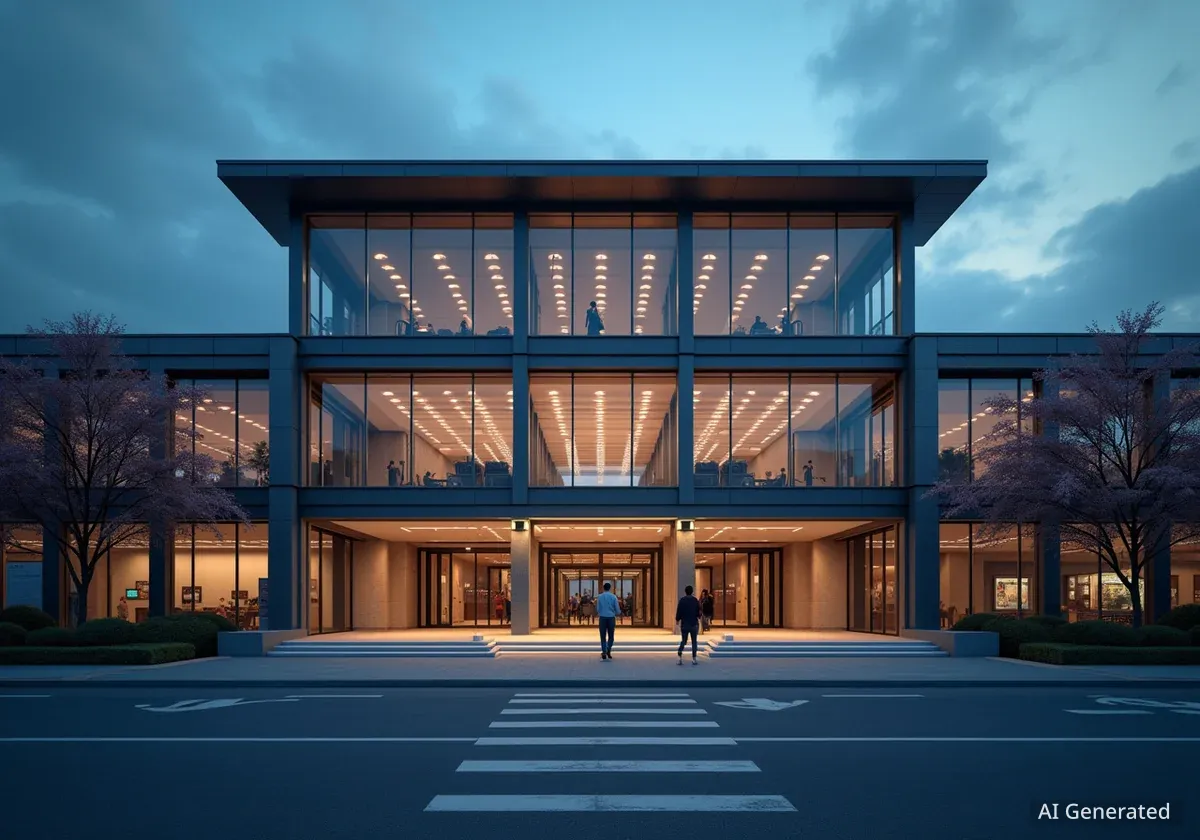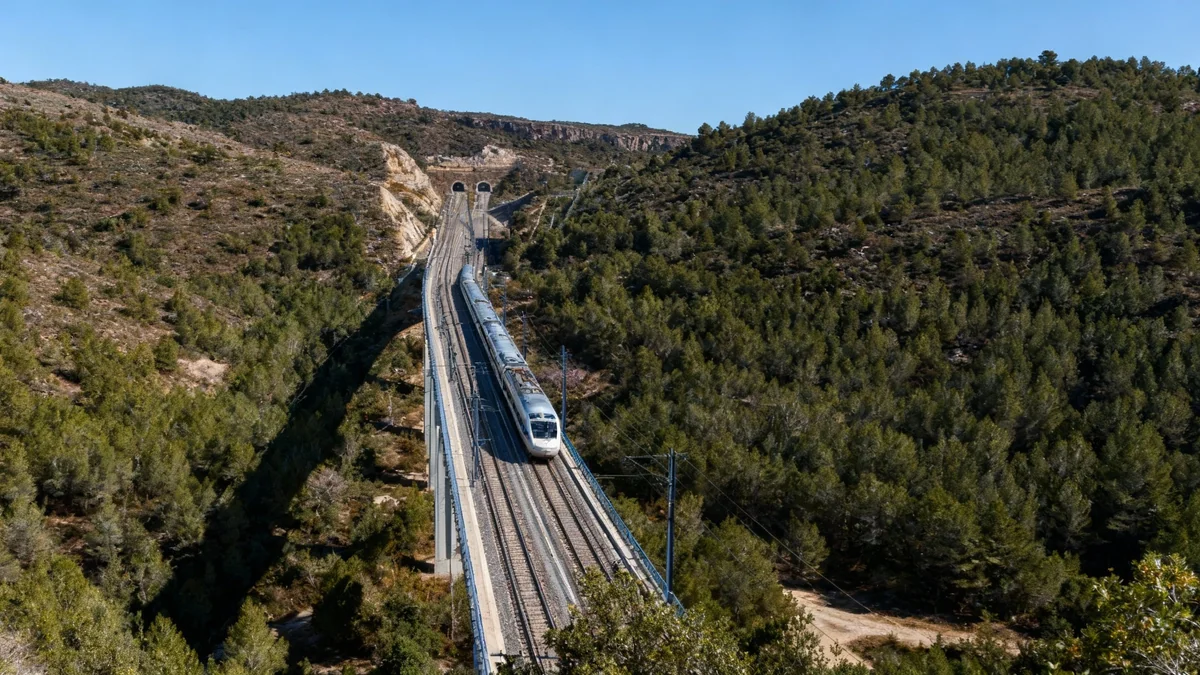Arlington Municipal Airport's proposed 20-year master plan has drawn criticism from a public advisory committee member. Concerns focus on a potential runway extension and future hangar development, which some believe could change the airport's character and impact a major local event.
Key Takeaways
- The Arlington Municipal Airport master plan outlines infrastructure needs for the next two decades.
- Proposed elements include a runway extension from 5,332 feet to 6,000 feet.
- Plans also designate a northwest area for future hangar construction.
- A committee member expressed concerns about the plan's impact on the SkyFest event and airport identity.
- Airport officials are still welcoming public feedback as the plan is about 75% complete.
Master Plan Outlines Future Airport Growth
The Arlington Municipal Airport's proposed master plan details the airport's infrastructure requirements over the next 20 years. This comprehensive document aims to guide future development and upgrades. It identifies specific areas for new construction and potential expansions to accommodate anticipated demand.
One key proposal within the plan involves extending runway 16/34. The current length is 5,332 feet. The plan suggests an extension to 6,000 feet. This change would allow for larger aircraft operations in the future.
Another significant element is the designation of the large open northwest corner of the airport grounds. This area is earmarked for incremental hangar development. These hangars would be built based on demand and funded privately.
Airport Plan Fact
The master plan is a 20-year vision document. It identifies development areas but does not mandate immediate construction. The Federal Aviation Administration (FAA) determines project timing based on funding and need.
Committee Member Expresses Strong Opposition
During a Planning Advisory Committee meeting, Dan Tarasievich, a member of the advisory committee, voiced strong objections. He specifically criticized the proposed runway extension and hangar development.
"It will definitely change the flavor of this airport. It will, in my opinion, kill this airport," Tarasievich said during the meeting. "You do that setup there at the north end — northwest corner — it’s done. There will be no Fly-In."
Tarasievich's concerns centered on SkyFest. This event, formerly known as the Arlington Fly-In, is the city's largest gathering. In 2024, it attracted 15,000 attendees. SkyFest uses the airport property where the master plan proposes future hangars.
Impact on SkyFest and Airport Identity
The potential runway extension would allow larger planes to use the airport. Tarasievich argued that this would require more space for these larger aircraft to be stored. He believes this increased demand for space would conflict with the needs of SkyFest.
Airport Director Marty Wray addressed these concerns. He acknowledged the importance of the event but emphasized the airport's long-term growth. "I’m not going to forego the growth of the airport for an event, any event," Wray stated.
Samantha Peterson, a planning project manager with Century West Engineering, confirmed that hangars would be built only when demand arises. Century West Engineering is the company contracted to complete the master plan.
What is SkyFest?
SkyFest is the largest annual event held in Arlington. It is a major community gathering that historically attracts thousands of visitors to the airport grounds for aviation displays and related activities. Its continued presence is a point of concern for some local residents and committee members.
Runway Extension and Aircraft Demand
Peterson clarified that a runway extension would indeed facilitate the use of larger aircraft. However, she noted that the Arlington Airport currently lacks the demand for such operations. "I see that happening beyond 20 years," Peterson explained during an open house following the committee meeting.
David Miller, lead aviation planner with Century West Engineering, reiterated this point. He stated that the master plan identifies suitable areas for development based on demand. The plan offers flexibility and a vision for the future, rather than immediate construction mandates.
"We don’t expect this level of demand to materialize in the next 20 years," Miller said. "Airports accommodate demand; they don’t necessarily generate demand. When the market comes to the airport, that’s when things happen."
Current Growth and Future Upgrades
Despite the current lack of demand for larger aircraft, the Arlington Airport has already experienced some growth. Airport Director Marty Wray noted that rising costs at other regional airports, such as Boeing Field and Paine Field, have led some aircraft to relocate to Arlington.
"We’re experiencing a significant number of people leaving those airports and coming to Arlington," Wray confirmed during the committee meeting. This trend suggests a gradual increase in airport activity.
The master plan also addresses necessary infrastructure upgrades. For instance, the airport's east apron requires repaving. Additionally, some taxiway systems could be added or reconfigured to meet current FAA design standards. However, Miller indicated that significantly different taxiway systems are not immediately necessary, even if traffic volume were to double. He stated that the existing runway and taxiway system has capacity to handle much more traffic.
Public Feedback Still Welcome
The master plan is currently about 75% complete. Airport Director Marty Wray encourages the public to continue providing feedback. This input is crucial as officials finalize the document.
The public's continued engagement will help shape the airport's future. Decisions on timing and priorities for development will ultimately be made by the FAA, based on funding availability and demonstrated need.
The goal is to create a plan that supports the airport's long-term viability while considering community impact. The feedback period remains open, allowing residents and stakeholders to contribute their perspectives on the proposed changes.





